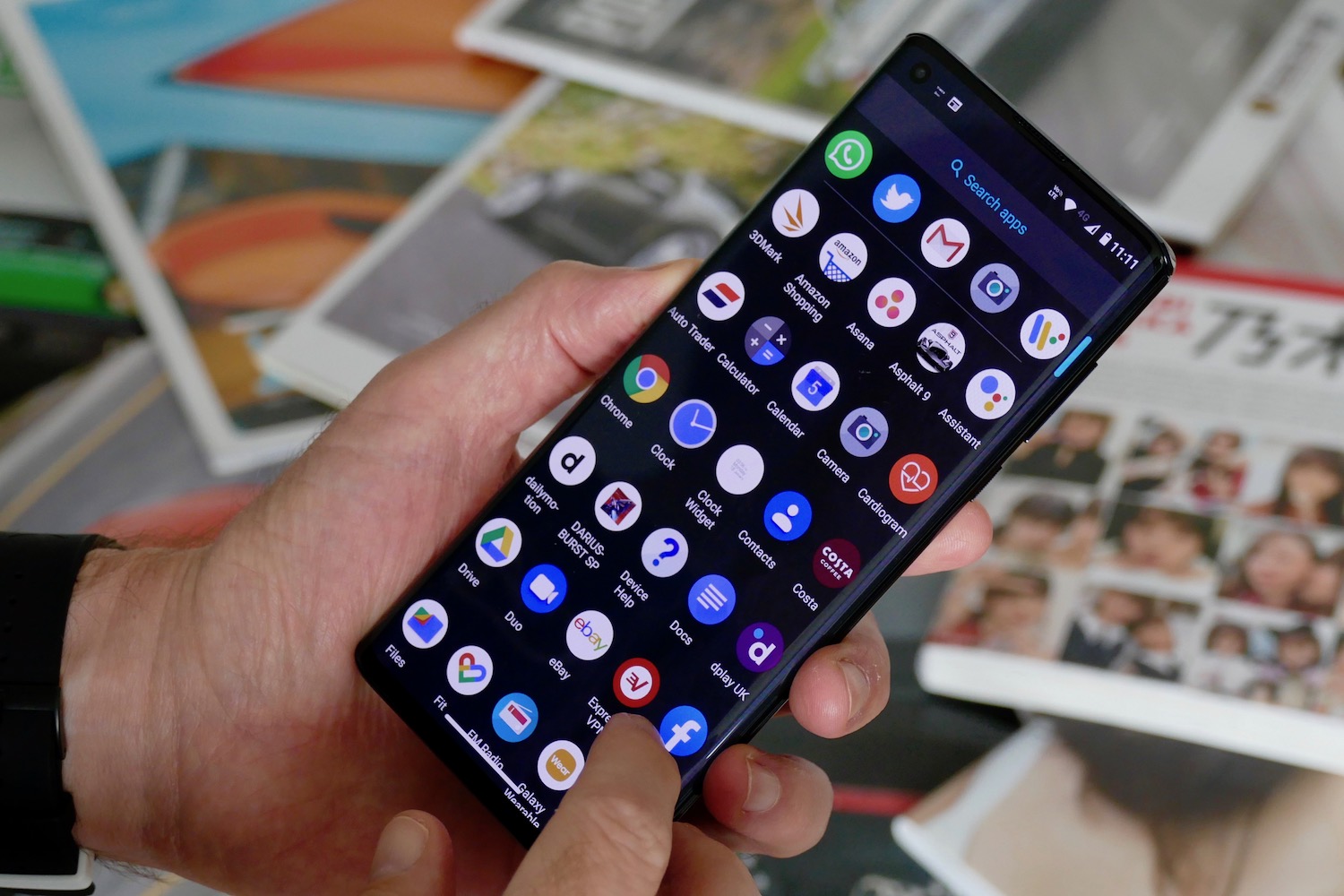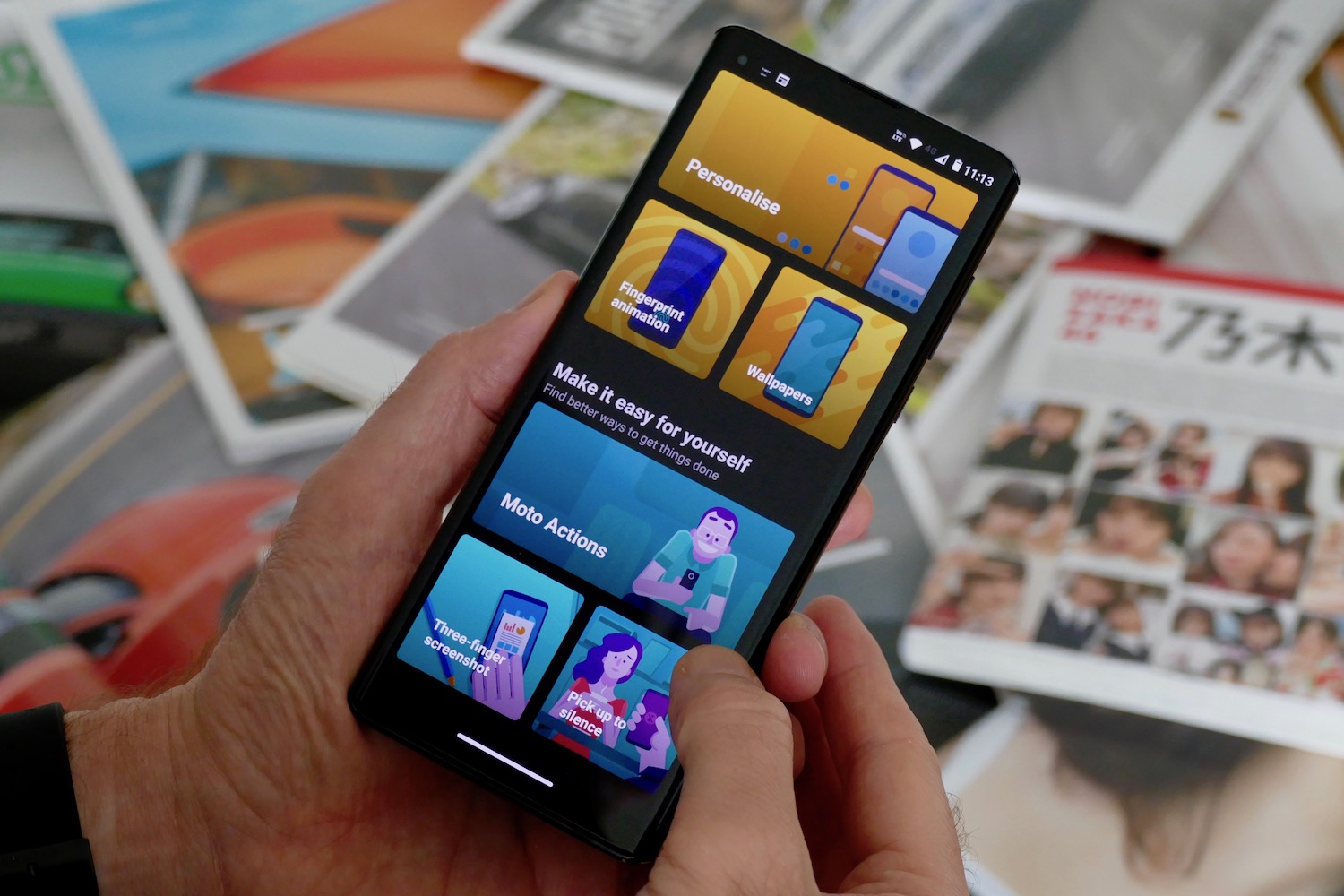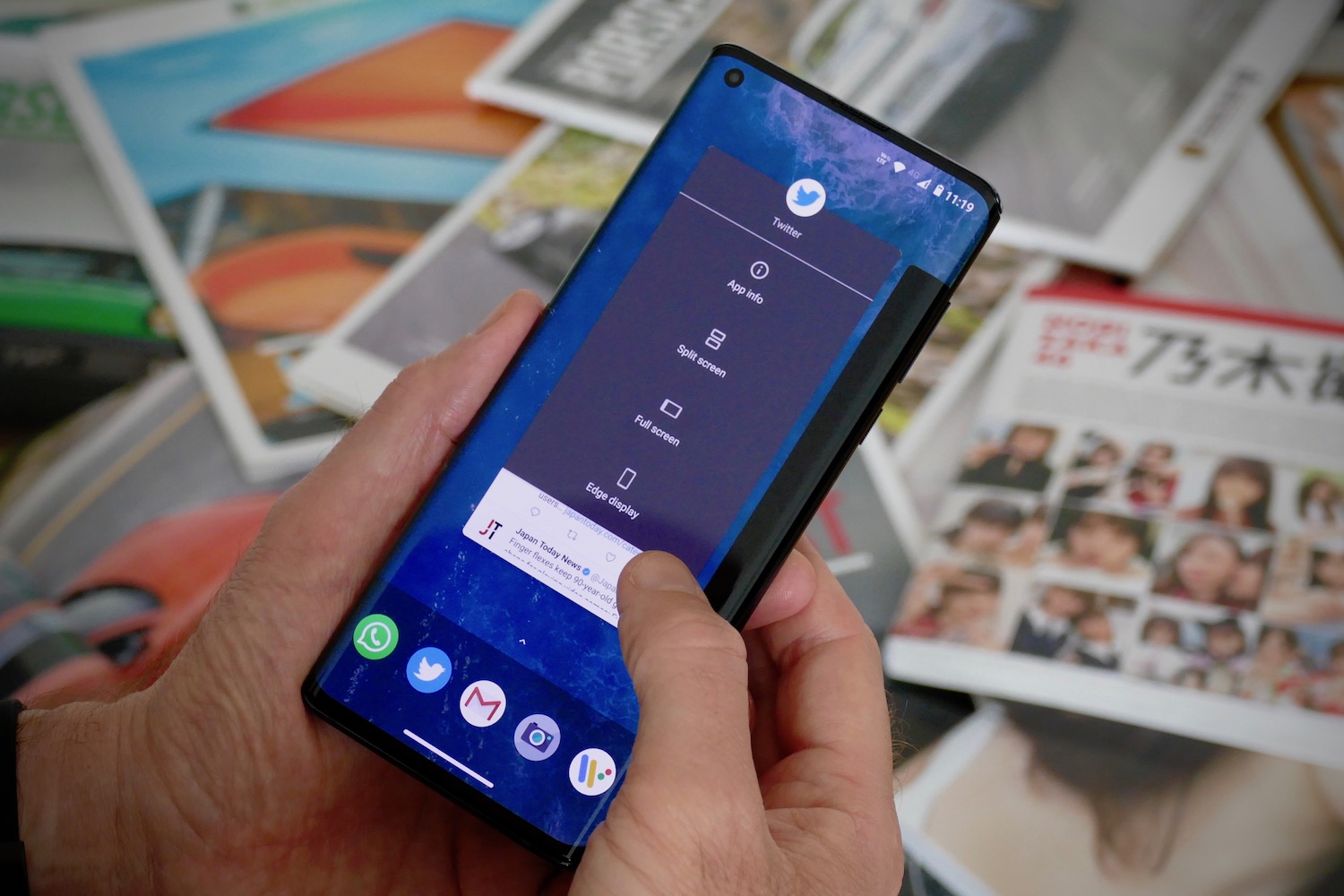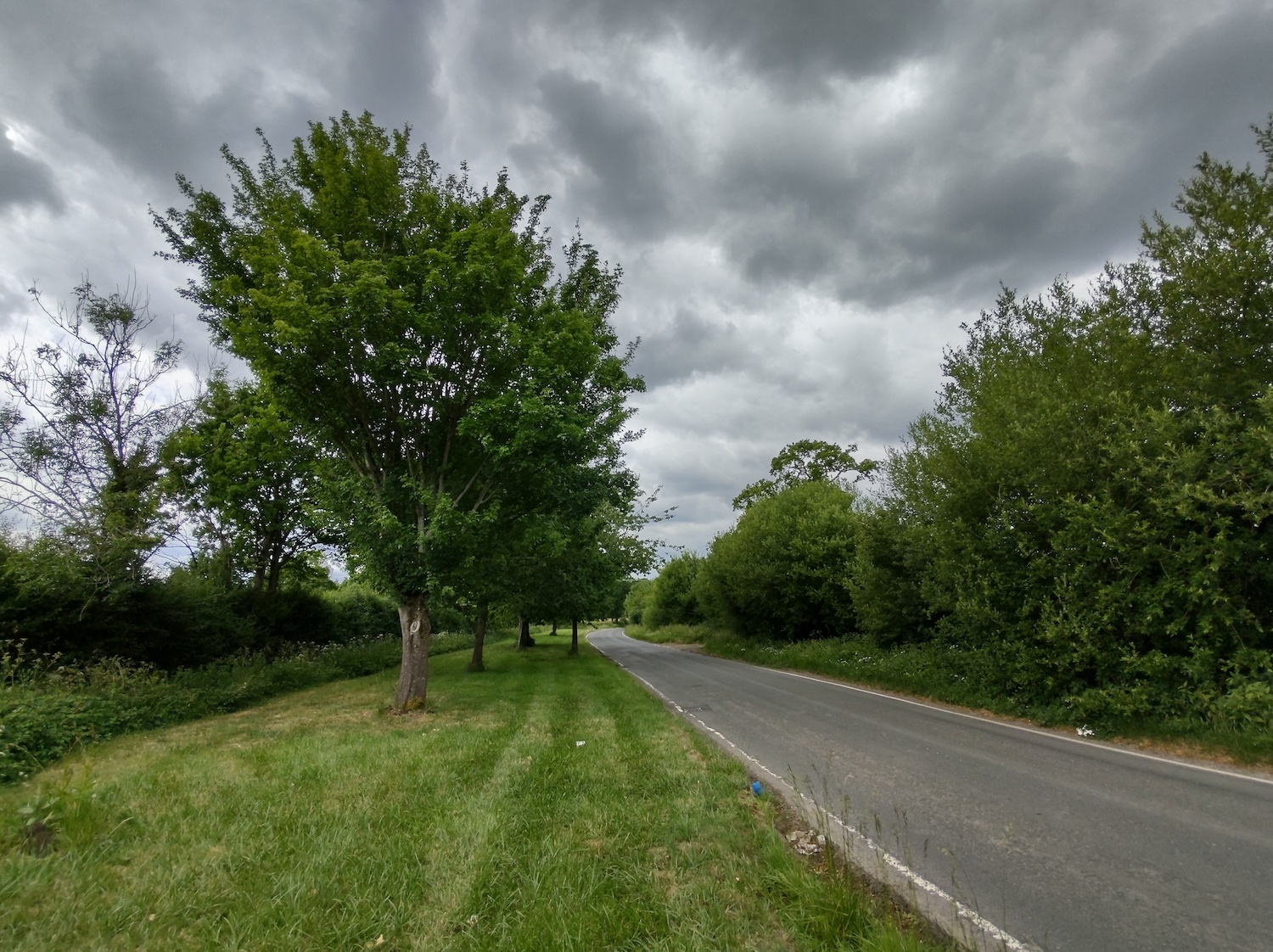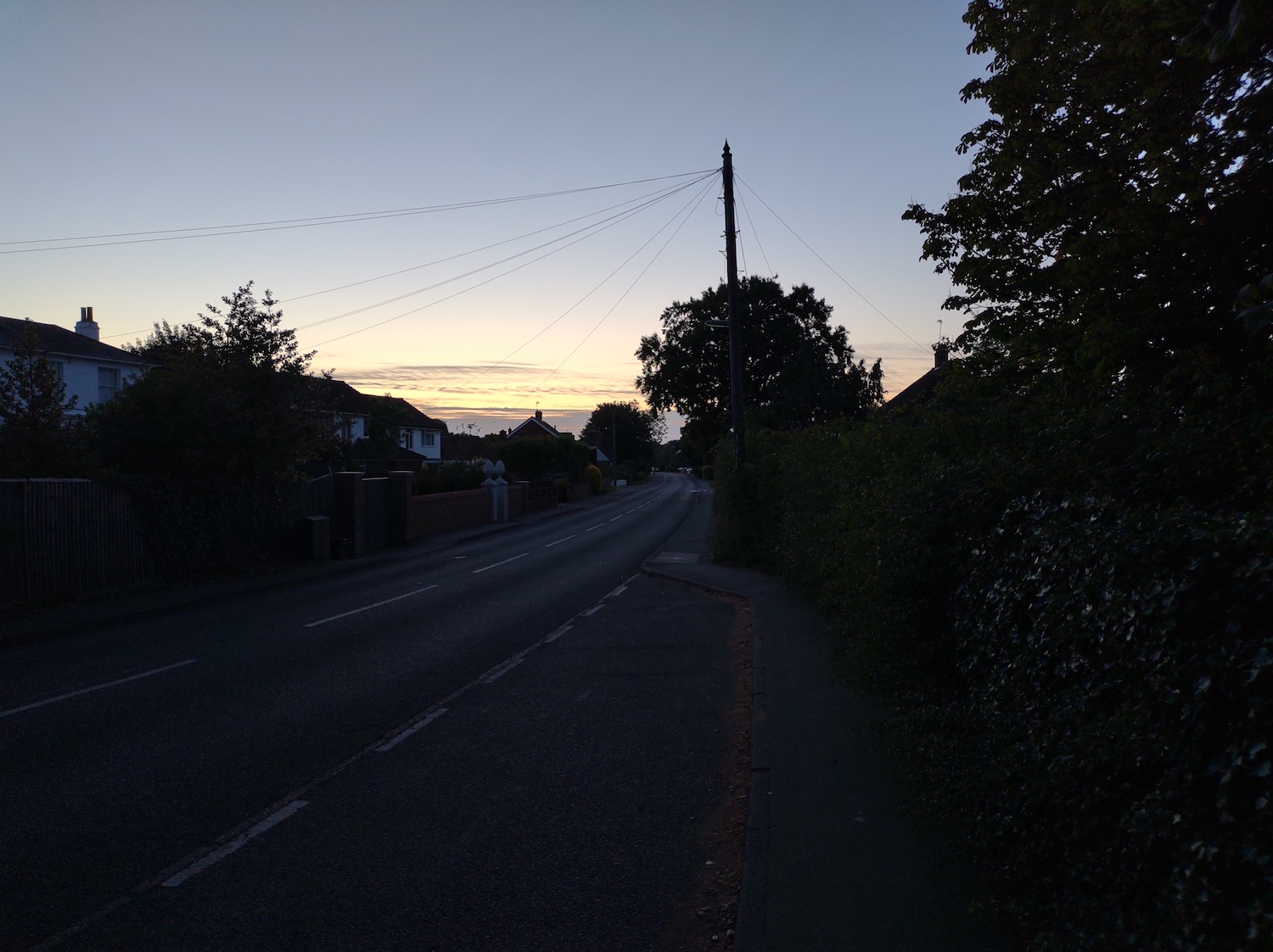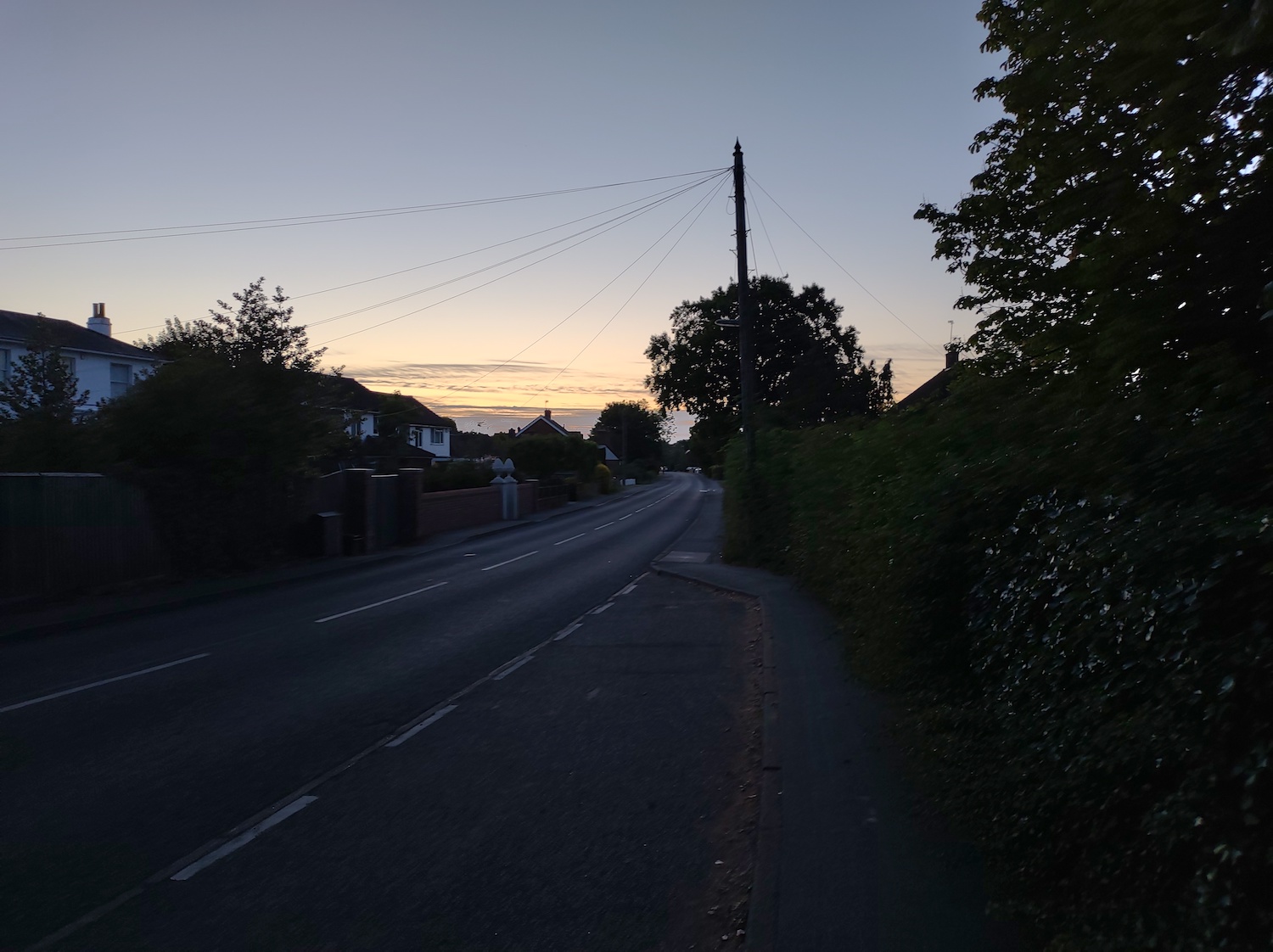“The Motorola Edge's significant everyday benefits, from battery life to performance, outweigh the few frustrating downsides.”
- Great screen
- 5G at a reasonable price
- Excellent battery life
- Strong everyday usability
- Pretty, easy-to-handle design
- Fingerprint sensor is unreliable
- Software can frustrate
- Camera needs improvement
There’s so much the Motorola Edge gets right it almost makes me forget about the annoyances. It’s the best looking Motorola phone in ages, and yes, I do count the Moto Razr in that statement. The screen is a killer. What’s more, I’ve liked using it, especially because it’s light, compact, and disappears in my pocket or bag. It’s great for everyday use, if you’re not looking for a gaming-focused powerhouse with the best camera out there.
However, there are a few irritations to do with the build quality, security, and the software, which are very frustrating and aren’t quite canceled out by the significant upsides. I’ve been using the phone for nearly two weeks now, and here’s the good and the bad in a lot more detail.
Design
The Motorola Edge is my favorite Motorola phone design in some time, and a prime reason is the 19.5:9 aspect ratio screen which slims the body right down, much like Sony did with the 21:9 aspect ratio Xperia 10 Plus. The advantage is the phone doesn’t require such a big stretch to hold, even though the screen is a giant 6.7 inches, and you can still reach on-screen buttons with your fingers. It even slips into your pocket nicely.
The screen tumbles over either side of the phone in the same way as the Motorola Edge Plus and the Huawei Mate 30 Pro, and helps you forget the tall-and-slim aspect ratio by removing the side bezels. I think it looks great and although the functionality is shaky, more on that later, it gives the Edge a striking, modern look that’s rarely seen on widely available devices.

At 188 grams, it’s light, but quite thick at 9.3mm, and the body is very slippery. It needs a case for long term usage because of this. The back of the phone is made from plastic, although it really does feel like glass, but it has already picked up a few unpleasant scratches on the back despite spending the majority of its time in the house. This is unfortunate, because I love the way the back of the Edge looks.
Motorola’s decision not to make the phone wafer-thin means the camera module doesn’t stick out half a mile, and is instead almost flush to the back of the phone. The Motorola logo is etched under the highly reflective black case, which then takes on a rainbow effect in the right light. It’s reminiscent of Samsung’s Aura Glow color on the Galaxy Note 10 Plus.

All good, then? No, not quite. My review Motorola Edge has a noticeable seam where the screen’s glass meets the body, and it’s not consistent all the way around the phone. Run your finger along the bottom left and it’s very pronounced, almost like the screen glass has been misaligned, while it’s perfectly smooth and matched in the top right corner. You don’t have to make an effort to find this either, as you notice every time you hold the phone.
This is a problem with waterfall displays, as my Huawei Mate 30 Pro review model has exactly the same problem. It’s distracting and feels like poor build quality, whether it actually is or not. The Motorola Edge scores some serious points in design, and then manages to lose just as many.
Screen and security
The 6.7-inch OLED touchscreen has 2340 x 1080-pixel resolution, a 90Hz refresh rate, and HDR10 support. The 19.5:9 aspect ratio is highly cinematic and gives the Edge a 95.9% screen-to-body ratio, interrupted only by a small hole-punch selfie camera, which is barely noticeable. The waterfall display makes wallpaper look superb, and when the phone is face down, a white notification light runs down the side that easily grabs your attention.

Watching the always stunning Carfection channel on YouTube in 1080p, with the screen’s color profile set to Saturated, reveals the Edge’s screen emphasizes colors a great deal, but never over-saturates. Instead, you get a wonderful balance between blacks and shadows, with bright blues and reds, resulting in a engaging and pleasant visual experience. Compare it to the iPhone 11 Pro, with the Natural color profile active, and there are times when the Edge looks just as good, and that’s high praise indeed.
HDR10 video plays without a problem, and some of the stunning movies look even better when you zoom in so it fills the whole of the screen, which at the same time brings the cascading edge into play. The audio is good too, with a single speaker on the bottom of the phone, plus audio from the speaker used for voice calls at the top of the screen. There’s plenty of volume and a decent amount of bass, but also a degree of vibration through the body of the phone. Overall, the Edge is an excellent media smartphone.

The screen has a fingerprint sensor set underneath, and it’s slow, unreliable, and frustrating. It often takes several tries for it to recognize your finger and then a second or so to unlock the device, or worse, a second or two to actually activate the sensor in the first place. This means you tap the screen and press the power button, all in the hope of it waking up, only to make things worse when the software gets in a tizzy. Using face unlock as an alternative compromises security, and really isn’t much faster, either. Security on the Edge is a disappointment.
Software
My review Motorola Edge has Android 10 with the May 2020 security update installed, and Motorola’s very light customization over the top. Visually it’s very similar to the look of Android on a Google Pixel 4, with the swipe up app tray and swipe down notification shade being untouched, and all the gesture controls and notifications untouched. This is a good thing, as Android 10 is easy to use, attractive, and speedy.

Motorola has added a selection of tools and features though, some of which are successful. I love the Peek Display, where notifications are delivered on the lock screen and a touch of the icon shows more information, and the Edge Light effect where the sides of the screen illuminate to alert you of a new notification grabbed my attention.
How about the edge of the screen in general? Edge Touch lets you open the app tray and notification shade from the side of the screen, interact with some app shortcuts, and generally use the phone with one hand. It’s not very successful, and frequently misunderstood my touches. I turned it off. Even then, the accidental interactions don’t stop. I often open Google Assistant by accident, and frequently find I’ve moved apps around on the screen. Plus, tapping buttons on the edges of the screen is frustrating, as they often don’t work.
One excellent feature is hidden away. Because some apps don’t play well with the waterfall screen, especially when text wraps itself around the edge making it hard to read, there is a way to switch any app from edgeless to a standard full-screen view. It’s found under the helicopter view of open apps, and by tapping the app icon. Very convenient, and a great way to avoid at least some of the annoyances caused by this type of display.
Most apps performed without a problem, but not the standard camera app. It doesn’t want to be hurried at all, and if you try it often crashes, sometimes to the point where the phone needs a restart to operate again. This happens most often when opening the camera from the lock screen, either after unlocking it or when using the wrist twist quick gesture Motorola forces you to use instead of adding an icon to swipe. I’ve missed various photographic moments while the camera app falls over because of this.
Camera
The camera app can be a pain, but what about the camera itself? On paper, it’s a solid performer with a 64-megapixel main camera with an f/1.8 aperture, a 16-megapixel f/2.2 ultrawide camera, plus an 8-megapixel telephoto for 2x optical zoom shots. There’s also a time-of-flight sensor to help with portrait and bokeh shots. On the front is a 25-megapixel wide-angle selfie camera with an f/2.0 aperture.

The results are good, but not quite as good as I expected, and it seems Motorola still needs to do some fine-tuning. The variation in exposure and dynamic range between the standard, wide-angle, and 2x zoom shots is considerable, and the wide-angle in particular struggles in difficult lighting. Colors are muted and the exposure too low. While it can be fixed with some editing, the shots aren’t shareable until you do tweak them, and that’s not acceptable.
Shoot with the standard camera, and the photos are generally much better, but problems still remain with exposure. You can’t always tell when this will happen, making it hard to predict if a photo is going to come out well.
I like the macro mode, which can take some very detailed close-up photos, and the portrait mode is good as well. However, the macro mode requires a very steady hand, while edges can be mistakenly blurred in portrait shots. Night mode does brighten pictures a little and without much impact on detail; but it’s not a drastic change like you’ll find on phones like the Huawei P40 Pro.
Motorola’s camera app, when it’s not having problems opening, is well laid out apart from one thing. Motorola has put the Google Lens button right next to the shutter button, and it’s not only too easy to accidentally press, but is also easily mistaken for the button used to switch between rear and front cameras, which is annoyingly placed right off to the side. You can’t edit the primary feature switcher either, so you have to go into a separate menu to activate Night or Portrait mode. Selfies in good light are great, with strong colors and plenty of detail, but it’s not so good in low light even using the Night mode, and edge detection in portrait mode is haphazard.
The Motorola Edge’s camera just isn’t very consistent, even though the hardware is good and it can take some great photos when the conditions are correct. It’s likely all down to software, which means future updates may bring improvements, but as it stands right now the Edge’s camera doesn’t inspire you to use it.
Performance and battery
The Motorola Edge does not use Qualcomm’s flagship Snapdragon 865 chipset, but the Snapdragon 765G chipset. This will make many think it’s “midrange,” but performance in the real world is anything but. Normal, everyday tasks including taking photos, using email, making calls, and checking social media apps is as fluid and fast as you could want.
Geekbench 5: 1785 Multi Core/573 Single Core
3DMark Sling Shot Extreme: 2800 (Vulkan)
Looking at the benchmark results, things are different. The Motorola Edge’s closest competitor is the OnePlus 8, which has the Snapdragon 865 chipset inside, and it trounces these figures. Even the aging Asus Zenfone 6 using last year’s Snapdragon 855 processor leaves the Motorola in its dust. It does beat the Samsung Galaxy A51 though.

The poor benchmark figures don’t translate into slowness, though. Asphalt 9 Legends is solid if you don’t turn the graphics right up, and DariusBurst is great too. No, the Motorola Edge isn’t really suitable for hardcore gamers, but for casual gaming it’s fine. Motorola has added a game mode that minimizes distractions, and also adds an option for virtual shoulder buttons, which are easily programmable for individual games.
Motorola has done the right thing with the Edge’s battery. It has a 4,500mAh capacity, and it has absolutely no problem lasting two full days sometimes with energy to spare. Add a few video calls to this and you will have to charge it sometime during the evening on the second day though. Even though currently my phone mostly connects to Wi-Fi, the Edge usually ended a normal day with more than 60% power left, even when connected to a smartwatch and with voice calls, photos, and app use. This is excellent performance.
It has 18W fast charging using the supplied charger, and this takes nearly an hour and 40 minutes to charge from zero to full, and only reached 26% after 20 minutes. There are faster charging systems available, and unfortunately, the Edge does not have wireless charging. Due to my local area not being a 5G coverage area, I have not been able to test the Edge’s 5G connectivity. However, I encountered no problems with regular calls and 4G LTE reception, but Wi-Fi did drop out sometimes when I was further away from my router. Many will also be happy to look at the bottom of the phone and see a 3.5mm headphone socket.
Price, warranty, and availability
The Motorola Edge costs 549 British pounds, or about $695, and is currently available for pre-order in the United Kingdom on Motorola’s own website, through the O2 network, and retailers including Amazon and Argos. A release in the United States has been indicated, but there are no details at the time of writing.
Our take
The Motorola Edge has strong upsides and annoying downsides. The size, performance, and screen are excellent, plus long battery life is a serious advantage, the camera is decent, and the price is reasonable given the phone has 5G for the future. These advantages pay dividends on a daily basis, making it very easy to live with. Elsewhere it isn’t as good as it should be due to the software and security frustrations, but some aspects could be improved with software updates in the future.
Is there a better alternative?
The Motorola Edge’s big challenger is the OnePlus 8. In the U.K. it costs 599 British pounds, or $699 in the U.S., and although it’s not the most exciting phone you can buy today, it’s very reliable and highly capable. It has 5G, ready for the future, and more performance than the Edge too. It’s the better purchase, unless you are able to stretch to the 799-British pound (or $899) OnePlus 8 Pro. Spend a little more again and the $999 (or 799-British pound) Samsung Galaxy S20 is a great phone. If you’re not settled on Android, the Apple iPhone 11 is also a superb purchase for $699, or 729 British pounds, with a great camera, design, software, and battery life.
How long will it last?
While 5G isn’t a benefit right now, it will become more desirable in the near future, and the Motorola Edge ensures you’re ready for the day without spending a fortune. It’s moderately durable with Gorilla Glass 5 on the front and plastic on the back, but as I’ve already discovered this can get scratched quite quickly. Motorola says the phone is water-repellent, but does not provide an IP rating, meaning it’ll be fine in the rain but not if you drop it in the bath.
Motorola says the Edge is guaranteed to receive Android 11, but according to the company, it’s not certain any will arrive after this. Based on this, you should only expect a single major Android update after purchase, and that’s not great.
Should you buy one?
Yes, despite the annoyances, the Motorola Edge’s overall everyday ability is excellent, and therefore is still worth buying if you’re taken by the screen and design.

